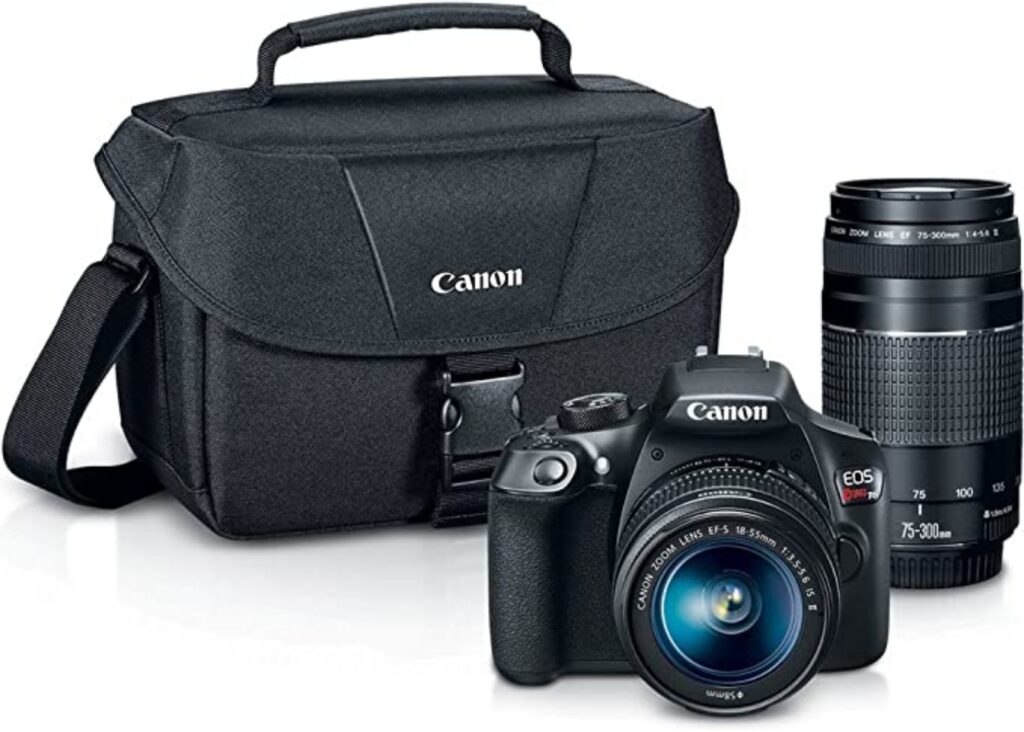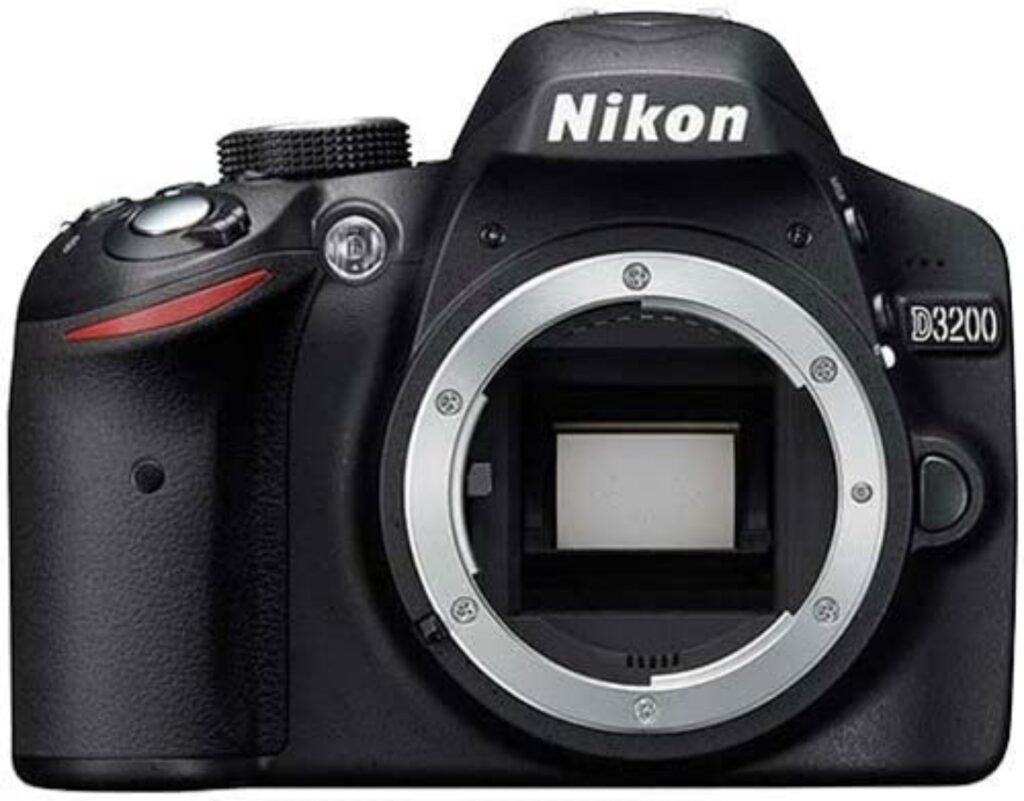
Canon EOS 70D
Digital single-lens reflex cameras (DSLRs) are popular choices among photographers who prefer the flexibility and quality of interchangeable lenses. One such camera that has been making waves in the market is the Canon EOS 70D. This mid-range DSLR comes with impressive features that cater to both professionals and enthusiasts. In this article, we will dive into the Canon EOS 70D, its features, advantages, and disadvantages.
[amazon_auto_links id=”6755″]
Table of Contents
- Introduction
- Canon EOS 70D – Features
- Image Sensor
- Autofocus System
- ISO Range
- Image Processor
- Video Capabilities
- Wi-Fi Connectivity
- Design and Build Quality
- Body and Grip
- Controls and Buttons
- Display Screen
- Performance and Image Quality
- Burst Mode and Continuous Shooting
- Autofocus Performance
- Image Quality
- Battery Life
- Advantages of the Canon EOS 70D
- Disadvantages of the Canon EOS 70D
- Conclusion
- FAQs
Canon EOS 70D – Features
Image Sensor
The Canon EOS 70D boasts a 20.2 megapixel APS-C CMOS sensor, which produces high-quality images with excellent detail, color accuracy, and contrast. The camera also features a Dual Pixel CMOS autofocus system, which allows for quick and accurate focusing, even in live view mode.
Autofocus System
The autofocus system on the Canon EOS 70D is one of its most notable features. The camera comes with 19 autofocus points, all of which are cross-type for enhanced precision. Additionally, the camera’s autofocus system features a predictive AF algorithm that tracks moving subjects, making it ideal for sports and wildlife photography.
ISO Range
The Canon EOS 70D has a native ISO range of 100-12800, which can be expanded up to 25600. This wide range of ISO settings allows for excellent low-light performance and flexibility in various lighting conditions.
Image Processor
The camera is equipped with the DIGIC 5+ image processor, which provides fast processing speeds and improves overall image quality. The processor also enables the camera to shoot continuously at up to 7 frames per second.
Video Capabilities
The Canon EOS 70D is also an excellent choice for videographers, with the ability to shoot full HD 1080p video at up to 30 frames per second. The camera also features a headphone jack for audio monitoring and a microphone input for better sound quality.
Wi-Fi Connectivity
The Canon EOS 70D comes with built-in Wi-Fi connectivity, which allows for easy sharing of photos and videos directly from the camera. The camera can also be remotely controlled using a smartphone or tablet via the Canon EOS Remote app
Design and Build Quality
Body and Grip
The Canon EOS 70D features a robust polycarbonate body that feels sturdy and well-built in hand. The camera also comes with a comfortable grip that allows for a secure and ergonomic hold, even when shooting for extended periods.
Controls and Buttons
The camera’s controls and buttons are well-placed and easy to access. The mode dial, for instance, is situated on the left-hand side of the camera, making it easy to switch between different shooting modes quickly. The camera also features a top-mounted LCD screen that displays essential shooting settings.
Display Screen
The Canon EOS 70D has a 3-inch, 1,040k-dot articulating touchscreen display that is both bright and responsive. The display can be tilted and swiveled, making it easy to shoot from various angles, including overhead and ground-level shots.
Performance and Image Quality
Burst Mode and Continuous Shooting
The Canon EOS 70D has an impressive burst mode that allows for shooting up to 7 frames per second. This feature is particularly useful for capturing action shots or fast-moving subjects. The camera also has a continuous shooting mode that can shoot up to 40 JPEG or 15 RAW files in one go.
Autofocus Performance
The autofocus system on the Canon EOS 70D is fast and accurate, with the ability to focus in low-light conditions. The Dual Pixel CMOS autofocus system works exceptionally well in live view mode, providing precise focus with minimal hunting.
Image Quality
The Canon EOS 70D produces excellent image quality, with sharp details, accurate colors, and good contrast. The camera’s high dynamic range (HDR) feature produces stunning images with improved shadow and highlight details.
Battery Life
The Canon EOS 70D comes with a rechargeable lithium-ion battery that can shoot up to 920 shots per charge, making it ideal for extended photo shoots or video recording.
Advantages of the Canon EOS 70D
- Excellent autofocus system that tracks moving subjects well.
- Wide ISO range for better low-light performance.
- Good build quality and comfortable grip.
- Full HD video capabilities with external microphone support.
- Wi-Fi connectivity for easy sharing and remote control.
Disadvantages of the Canon EOS 70D
- No 4K video support.
- No headphone jack for audio monitoring during video recording.
- Limited dynamic range compared to some competitors.
- No built-in GPS.
More information👇👇👇👇
Canon EOS-70D – Digital single-lens reflex camera
Conclusion
Overall, the Canon EOS-70D is a great mid-range DSLR camera that offers excellent features and capabilities for both photo and video shooting. Its autofocus system, wide ISO range, and built-in Wi-Fi connectivity make it a versatile and convenient camera for photographers and videographers alike.
FAQs
Does the Canon EOS-70D have a full-frame sensor?
No, the Canon EOS-70D has an APS-C sensor.Is the Canon EOS-70D a good camera for beginners?
Yes, the Canon EOS-70D is an excellent camera for beginners due to its user-friendly interface and versatile features.Can the Canon EOS-70D shoot in RAW format?
Yes, the Canon EOS-70D can shoot in both RAW and JPEG formats.Does the Canon EOS-70D have image stabilization?
No, the Canon EOS-70D does not have in-body image stabilization, but some lenses may have built-in stabilization.What is the price of the Canon EOS-70D?
The price of the Canon EOS-70D varies depending on the retailer and package, but it ranges from around $700 to $1000.








